Installing a pressure
transmitter correctly is critical to ensure reliable, stable, and accurate
pressure, differential pressure, or liquid level measurements in any industrial
process.
This detailed guide from Silver Automation Instruments provides
step-by-step instructions and best practices for electrical installation, mechanical mounting, impulse line layout, and remote diaphragm
seal configuration.
Whether you are setting up a differential pressure transmitter, gauge
pressure transmitter, or level transmitter, proper installation guarantees
measurement precision, device longevity, and safe operation under demanding
industrial conditions.
1.
Electrical Installation and Wiring of Pressure Transmitters
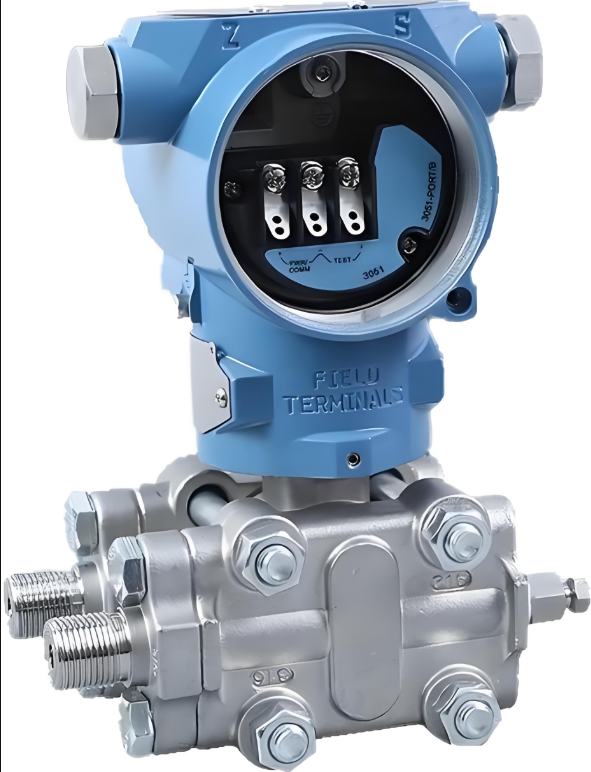
Termincal of DP transmitter
Electrical wiring is the
foundation for stable signal transmission. The power supply wire and signal
wire share the same cable, simplifying installation and reducing potential
wiring errors.
To begin, remove the housing
cover on the terminal compartment side and connect the positive and negative
leads to the corresponding terminals. Silver Automation Instruments
recommends using a twisted-pair or shielded cable to minimize
electromagnetic interference (EMI) and ensure signal stability, especially in
environments with heavy electrical noise such as refineries, chemical plants,
or power generation facilities.
-
Recommended wire
cross-section: 0.5 mm² ≤ S ≤ 2.5 mm²
-
Shielding and grounding: Always ground the shielding properly to avoid signal drift.
-
Moisture protection: Plug and seal any unused conduit entry to prevent moisture accumulation inside the terminal compartment.
-
Conduit separation: Do not run the signal cable in the same conduit as high-voltage power
lines.
If the conduit cannot be
sealed, it should face downward (“adown”) to prevent condensation buildup
inside the transmitter enclosure.
Proper electrical installation
ensures that your pressure transmitter output (4–20mA, pulse, or digital
HART/Modbus signal) remains stable and accurate throughout the operating
life of the device.
DP Transmitter wiring
2.
Mechanical Installation and Mounting Methods
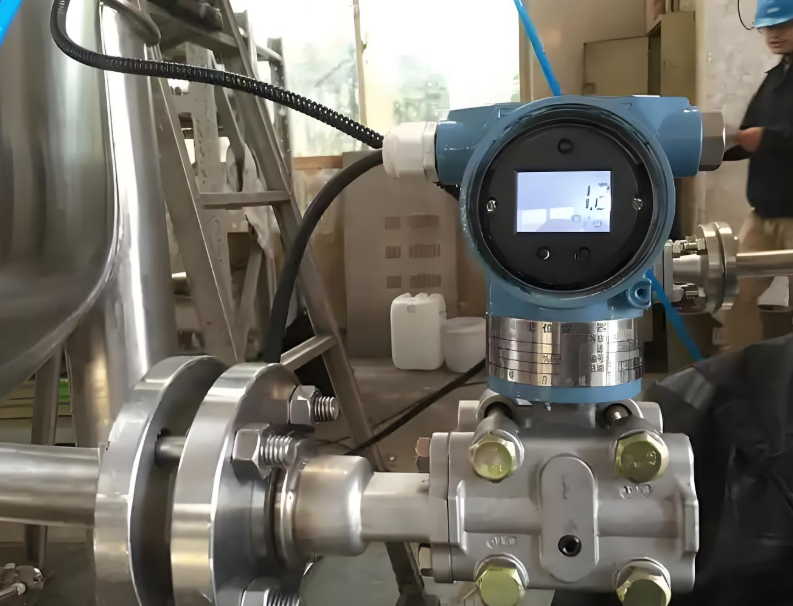
Diaphragm Seal DP Transmitter install
Pressure transmitters can be
mounted directly on process taps or remotely using brackets and impulse
lines. Silver Automation Instruments offers several mounting
configurations, including:
-
Bent bracket pipe mounting
-
Bent bracket panel mounting
-
Flat bracket pipe mounting
-
Flat bracket panel mounting
Bent Bracket Pipe Mounting Bent Bracket Panel Mounting
Flat Bracket Pipe Mounting Flat Bracket Panel Mounting
These configurations allow
flexible installation depending on plant layout and accessibility.
2.1
Process Connection and Mounting Tips
The process connection of most
transmitters is ¼ NPT on the flange, with adaptors available for ½
NPT taper threads.
When connecting impulse lines, tighten bolts incrementally in a cross
pattern to avoid distortion, using a maximum torque of 40 N·m.
Key mechanical
recommendations:
-
Keep impulse piping as short
and straight as possible.
-
Avoid sudden temperature
fluctuations, vibration, or corrosive atmospheres.
-
Mount the pressure
capsule vertically to prevent zero shift.
-
For differential pressure
transmitters measuring vertical pipelines, compensate for height
difference using “zero pressure trim” through the display or HART
communicator.
Proper mounting of the pressure
transmitter and impulse lines directly affects measurement accuracy and
repeatability.
3.
Impulse Line Installation and Error Prevention
Impulse lines transfer
pressure from the process taps to the transmitter. Incorrect impulse line
design or installation can cause measurement drift or systematic errors.
Common
Causes of Measurement Errors
-
Leakage or loose fittings
-
Erosion or abrasion due to
purge gas or liquid
-
Gas bubbles in liquid lines
or liquid slugs in gas lines
-
Unequal temperature across
both impulse legs
-
Incorrect slope causing
trapped gas or condensate
Best
Practices to Minimize Error
-
Keep impulse piping short
and equal in length.
-
For liquid service,
slope the impulse piping upward (≥1/12) from transmitter to
process.
-
For gas service,
slope it downward (≥1/12) from transmitter to process.
-
Vent gas from liquid legs
and drain condensate from gas legs.
-
Use large-diameter tubing to prevent friction loss and blockage.
-
When purging, connect purge
lines near the process taps and purge through equal-length pipes—never
purge through the transmitter.
-
Maintain both impulse lines
at similar temperature to prevent density differences.
These guidelines are essential
for reliable differential pressure measurement and long-term transmitter
stability.
4.
Remote Diaphragm Seal Installation Guidelines
In applications involving high
viscosity, high temperature, or corrosive media, remote
diaphragm seal transmitters are used to isolate the sensing element from
the process fluid.
Best
Installation Practices
-
Keep capillaries as short
as possible to reduce response time.
-
Avoid direct sunlight or heat sources to prevent temperature-induced drift.
-
Ensure both capillaries are equal
in length when using dual remote seals.
-
Mount transmitters with one
diaphragm seal at or below the process connection level.
-
For two remote seals,
install the transmitter between or slightly below both seals.

Remote Diaphragm Seal pressure transmitter Installation
Correct capillary routing and
equal seal lengths ensure stable readings and accurate pressure or level
measurement in reactors, tanks, and pipelines.
5.
Liquid, Gas, and Steam Flow Measurement
Different media require
specific installation orientations to ensure accuracy and prevent trapped
phases.
5.1
Liquid Flow Measurement
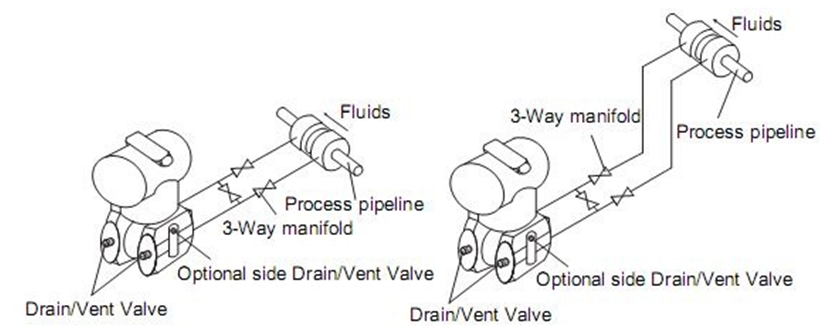
Liquid Flow Measurement
-
Place taps on the side of
the line to prevent sediment accumulation.
-
Mount the transmitter beside
or below the taps so gases can vent into the process.
-
Keep the drain/vent valve
facing upward to allow gas release.
5.2
Gas Flow Measurement
-
Mount taps on the top or
side of the pipeline.
-
Install the transmitter above the taps to allow liquids to drain back into the line.
5.3
Steam Flow Measurement
-
Install taps on the side
of the line, and mount the transmitter below the taps to keep
the impulse lines filled with condensate.
-
For steam above 250°F
(121°C), fill impulse lines with water to protect the sensor and
maintain measurement accuracy.
-
Ensure the process
temperature does not exceed the transmitter’s rated limit.
These guidelines guarantee
accurate flow readings across different media and operating conditions.
6. Level
Measurement Using Pressure Transmitters
Pressure transmitters can also
be used to measure liquid level in open or closed vessels by detecting
the hydrostatic pressure of the liquid column.
6.1
Open Vessels
Connect the transmitter’s high-pressure
side to the bottom tap, with the low-pressure side vented to the
atmosphere.
If the transmitter and tap are on the same level:
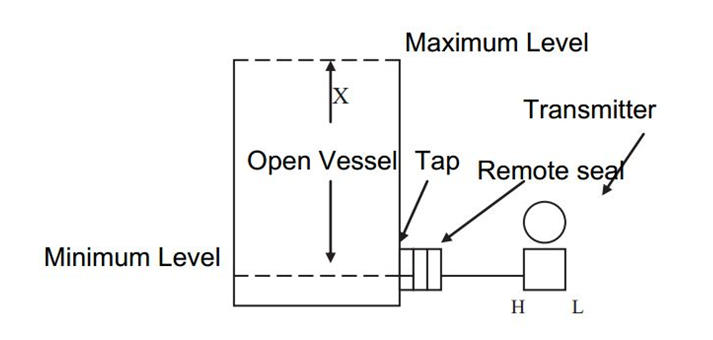
Transmitter with the same level as tap
Px=x×ρ×g
where x = liquid height
(m), ρ = fluid density (kg/m³), g = 9.80665 m/s².
Example: For x = 6.5 m and ρ = 1000 kg/m³,
Range = 0 ~ 63.7 kPa.
If the transmitter is higher
or lower than the tap, additional terms (±hρ₀g)
must be included to correct for height differences and fill fluid density (ρ₀).
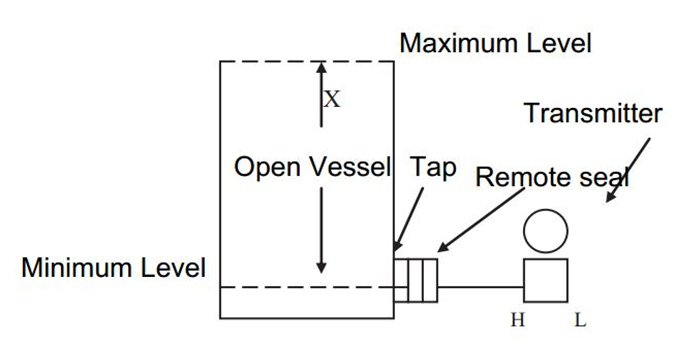
Transmitter with higer level than Tap
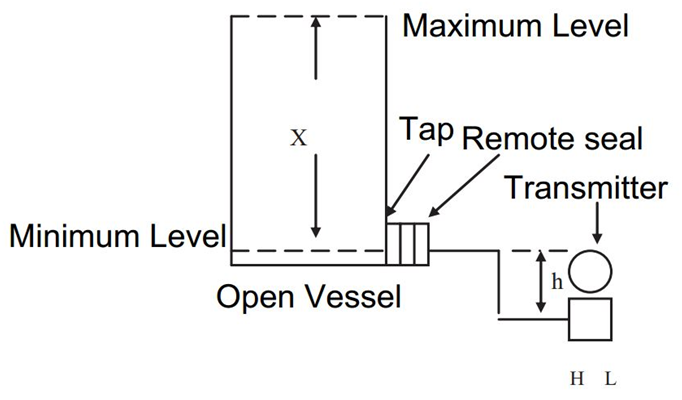
Transmitter with lower level than Tap
6.2
Closed Vessels
In closed tanks, the
transmitter must compensate for vapor or gas pressure above the liquid.
Two main methods are used:
-
Dry leg condition: Gas above liquid does not condense; the low-pressure side remains empty.
-
Wet leg condition: Both sides are filled with liquid using double remote seals to
prevent condensation errors.
Example calculation (wet leg):
Range=g(yρ−hρ0) g[(x+y)ρ−hρ0]
This ensures the differential
pressure reflects only the actual liquid level, not vessel pressure variations.
⚠️ Attention: The process
medium should not freeze, or it may damage the isolation diaphragm or
transmitter module.
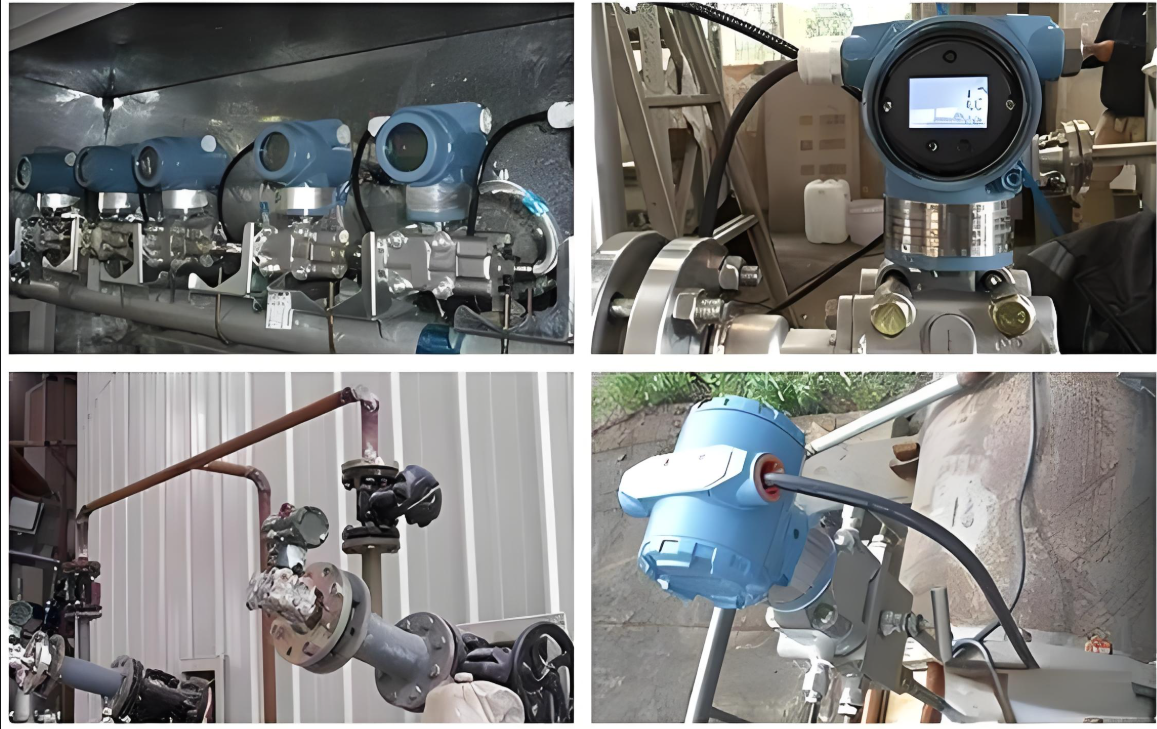
Transmitter and DP transmitter install
7.
Environmental and Safety Considerations
-
Avoid installing
transmitters in areas with strong vibration, extreme temperature
change, or direct sunlight.
-
Use heating jackets for viscous or heavy oils.
-
For explosion-proof models,
ensure compliance with hazardous area certification (ATEX / Exd).
-
Always depressurize and vent
lines before maintenance or calibration.
Following these safety and
environmental recommendations ensures long-term reliability and compliance with
industrial standards.
8.
Troubleshooting Common Installation Problems
|
Problem
|
Likely
Cause
|
Recommended
Solution
|
|
Unstable
reading
|
Gas
in liquid line / poor grounding
|
Vent
trapped air, check shielding
|
|
Zero
shift
|
Horizontal
capsule position
|
Rotate
housing, perform zero trim
|
|
Slow
response
|
Long
or unequal capillaries
|
Shorten
and equalize lines
|
|
Drifting
signal
|
Moisture
ingress
|
Seal
conduits and dry connections
|
|
Incorrect
level reading
|
Temperature
difference in legs
|
Use
equal-length impulse lines
|
Proper preventive maintenance
and installation checks can eliminate most issues encountered during field
commissioning.
9. Why
Choose Silver Automation Instruments
Silver Automation Instruments is a
trusted pressure transmitter manufacturer in China, serving global
customers across industries such as oil & gas, power generation, water
treatment, and chemical processing.
We provide:
-
Differential, gauge, and
absolute pressure transmitters
-
Models with remote
diaphragm seals, HART/Modbus output, and explosion-proof
housing
-
Factory calibration and full
ISO 9001 compliance
-
Custom process connections
and materials for corrosive applications
Visit our website www.silverinstruments.com to
explore our full range of industrial automation instruments, including Coriolis
mass flow meters, magnetic flow meters, and positive displacement
flow meters.
Conclusion
Proper pressure transmitter
installation and wiring is vital for obtaining accurate process data and
maintaining plant efficiency.
By following the electrical, mechanical, and calibration recommendations
provided by Silver Automation Instruments, you can ensure your
transmitter performs reliably under all conditions — whether measuring steam
flow, tank level, or process pressure.
With careful attention to
details like impulse line routing, capillary placement, and environmental
protection, your transmitter will deliver years of precise,
maintenance-free service.
FAQs: Pressure Transmitter Installation, Wiring & Calibration
1) What cable should I use for a 4–20 mA/HART pressure transmitter?
Use twisted-pair, shielded cable (0.5–2.5 mm²). Ground the shield at one end only (typically the control room) to reduce ground loops and EMI.
2) Can I route the transmitter signal cable in the same conduit as power lines?
No. Run low-level signal wiring in a separate conduit. If a conduit entry can’t be sealed, orient it downward to prevent moisture ingress.
3) How do I prevent moisture from causing drift or intermittent signals?
Seal unused entries, use proper cable glands, add a drip loop, and consider a desiccant pack in humid areas. Inspect periodically for condensation.
4) What straight-run and mounting orientation help minimize zero shift?
Mount the capsule vertical when possible. For DP applications, keep impulse lines short, equal in length, and correctly sloped (liquid: up toward process; gas: down toward process).
5) When should I choose a wet leg vs. a dry leg for closed vessels?
Dry leg: Vapor space is non-condensing (stays dry).
Wet leg: Vapor condenses or temperatures vary; fill both legs (or use dual remote seals) to keep densities stable and avoid level errors.
6) How do I size capillaries for remote diaphragm seals?
Keep them as short as practical, protected from heat/sun, and equal length for dual seals. Shorter and equal capillaries improve response and reduce temperature-induced drift.
7) What torque should I apply to process connections and flanges?
Tighten bolts gradually with a cross pattern; maximum typical torque is 40 N·m for the listed assemblies (verify with your specific model and gasket material).
8) How do I zero and range a DP transmitter after installation?
Isolate the process, equalize both sides (open equalizing valve), perform zero trim from the display or HART/Field communicator, then apply a known pressure (hand pump or deadweight) to set span.
9) What are common causes of unstable readings and how do I fix them?
Air in liquid legs, liquid slugs in gas legs, loose fittings, poor shielding/grounding, and temperature differences between impulse lines. Vent/drain legs, tighten fittings, and equalize line lengths and temperatures.
10) How should I install taps for liquid, gas, and steam flow measurement?
Liquid: taps on the side; transmitter at/below taps so gases vent to process.
Gas: taps on top/side; transmitter above taps so liquids drain back.
Steam: taps on the side; transmitter below taps; fill legs with water above 121 °C to protect the sensor.
11) What safety and certification points matter in hazardous areas?
Use transmitters with appropriate approvals (e.g.,
ATEX/IECEx Ex d/Ex ia). Ensure proper barriers, grounding, and installation per the zone classification and local code.
12) How do I calculate the range for level measurement in open tanks?
Range ≈ ρ·g·H (e.g., 1000 kg/m³ × 9.80665 m/s² × height). If the transmitter is not at the same elevation as the bottom tap, include head corrections from elevation differences and any fill fluid.
13) Why is my response time slow on a remote seal system?
Excessive capillary length, small bore, or temperature gradients increase fill-fluid viscosity and response time. Shorten/equalize capillaries and insulate from heat sources.
14) How often should a pressure transmitter be calibrated?
Typical plant practice is 6–12 months. Calibrate sooner after first startup, after maintenance, or when process or ambient conditions change significantly.
15) What’s the best way to purge impulse lines without damaging the transmitter?
Introduce purge near the process taps and purge through equal-length tubing back to process or a safe drain—never purge through the transmitter body.
Author: Silver Automation Instruments — Engineering Team
Practical instrumentation specialists with 10+ years of field experience in flow, pressure, and level measurement.
Expertise in Pressure, gas turbine, Coriolis, magnetic, and ultrasonic meters. ISO 9001 processes.
Website: silverinstruments.com |
Email: technician@silverinstruments.com
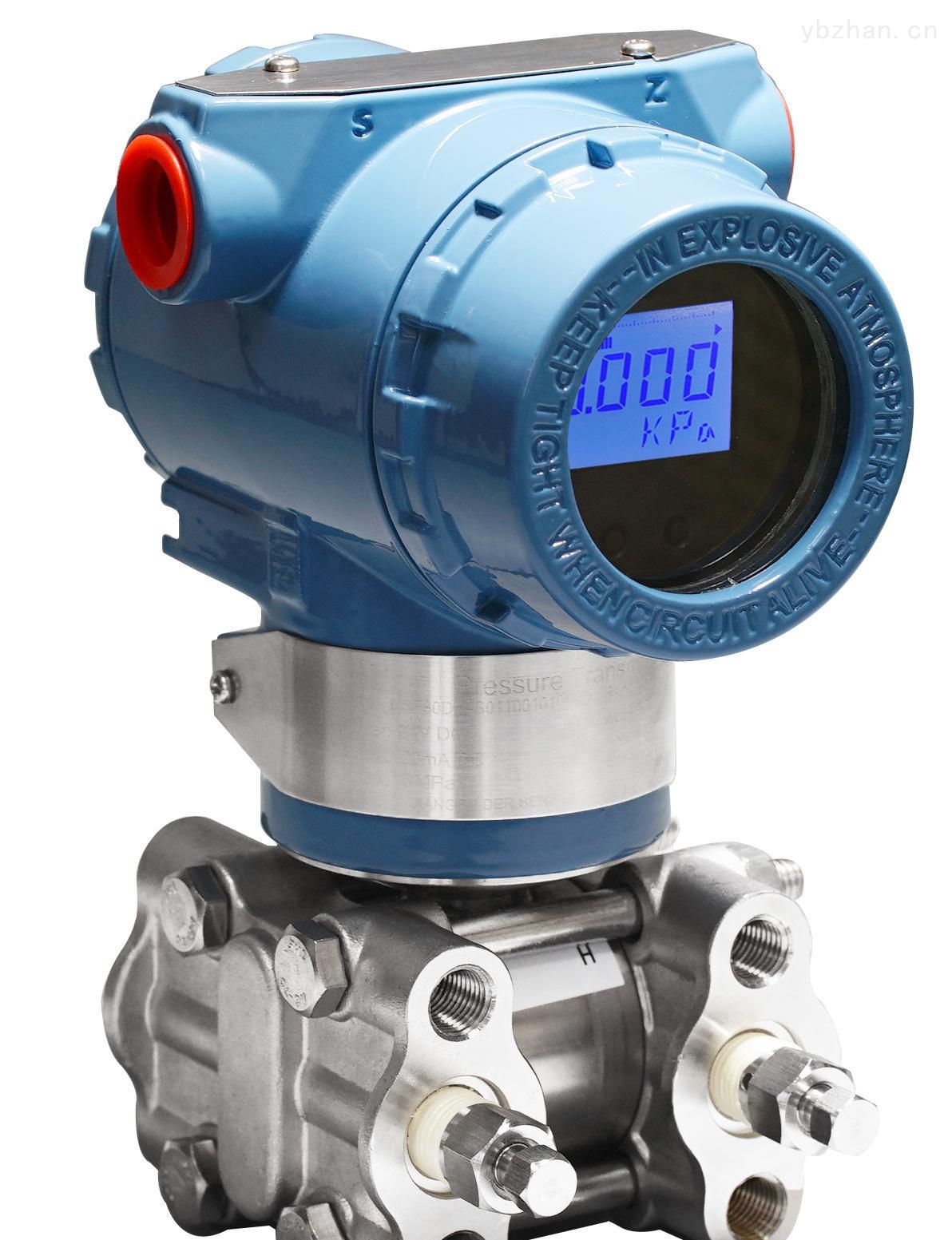

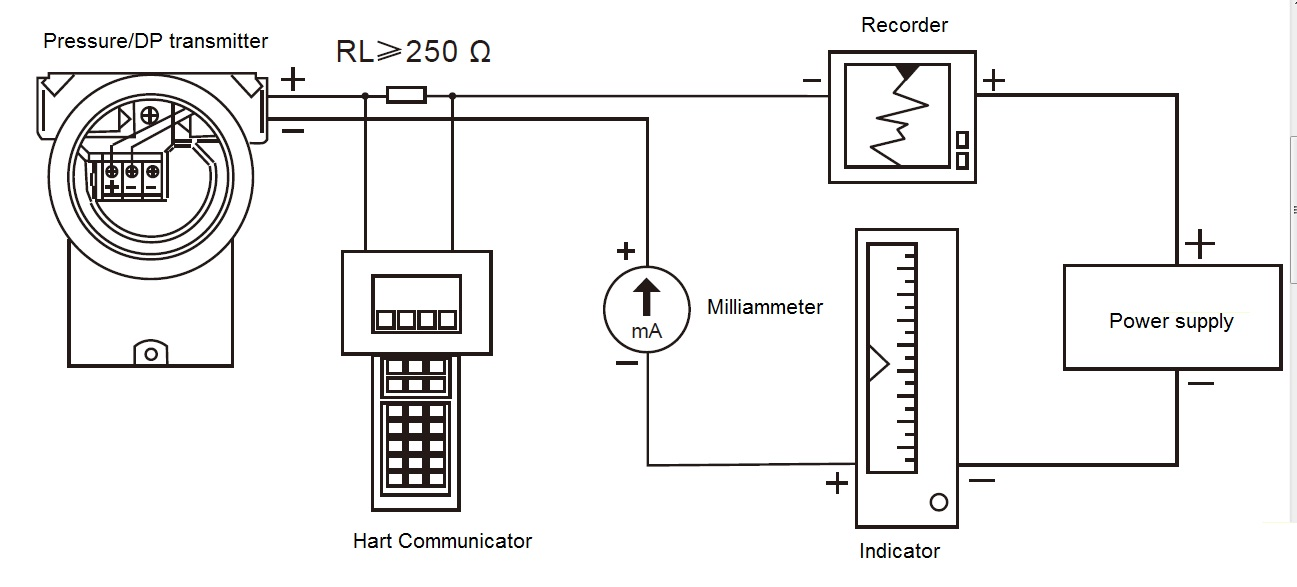
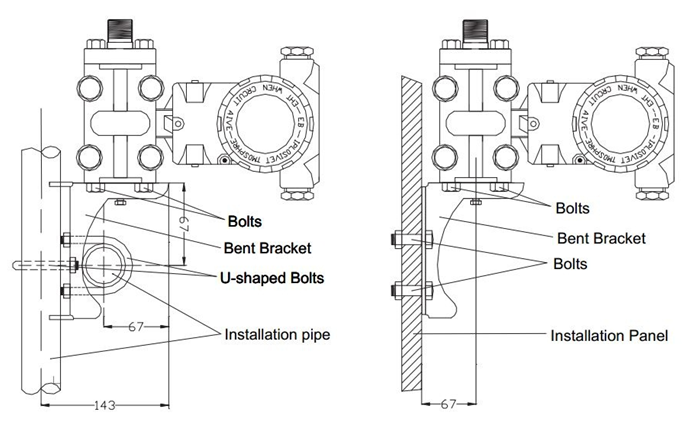
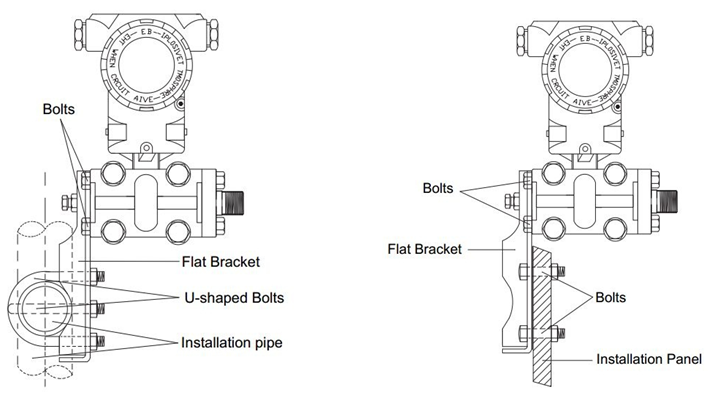






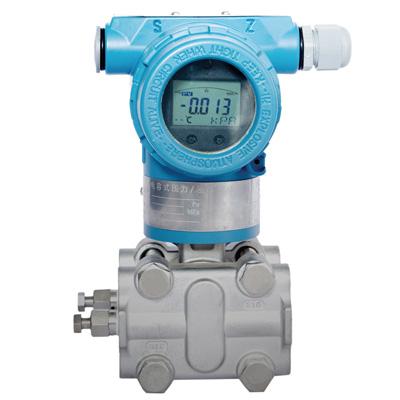 Differential Pressure Transmitters2018/01/04Monocrystalline silicion sensor;
Differential Pressure Transmitters2018/01/04Monocrystalline silicion sensor; 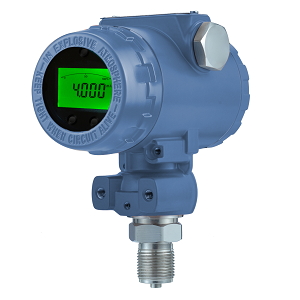 SH 308 Series Pressure Transmitter2017/04/26Piezoresistive pressure cost is low;
SH 308 Series Pressure Transmitter2017/04/26Piezoresistive pressure cost is low; 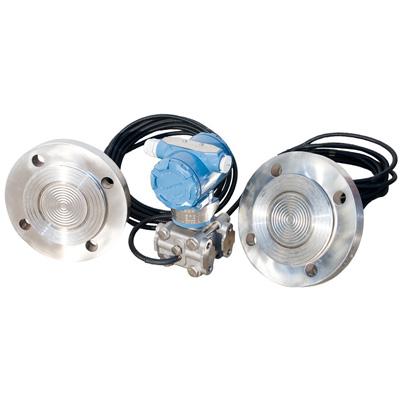 Pressure Transmitter with Remote Diaphragm seals2017/04/12Remote diaphragm for corrosive or viscous fluids.
Pressure Transmitter with Remote Diaphragm seals2017/04/12Remote diaphragm for corrosive or viscous fluids.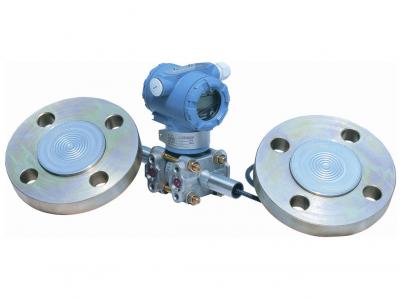 Remote seal pressure transmitter2020/05/29You probably looked for this articlebecause there is so much you need to understand about a remote seal pressuretransmitter in detail, which is, in some instances, referred to as a chemical ora diaphr...VIEW
Remote seal pressure transmitter2020/05/29You probably looked for this articlebecause there is so much you need to understand about a remote seal pressuretransmitter in detail, which is, in some instances, referred to as a chemical ora diaphr...VIEW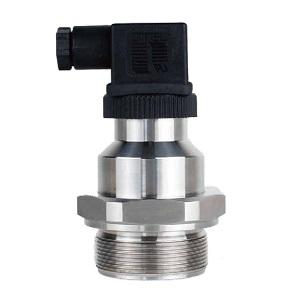 Ceramic Pressure Sensor2025/04/02Ceramic capacitive pressure sensor.
Ceramic Pressure Sensor2025/04/02Ceramic capacitive pressure sensor.